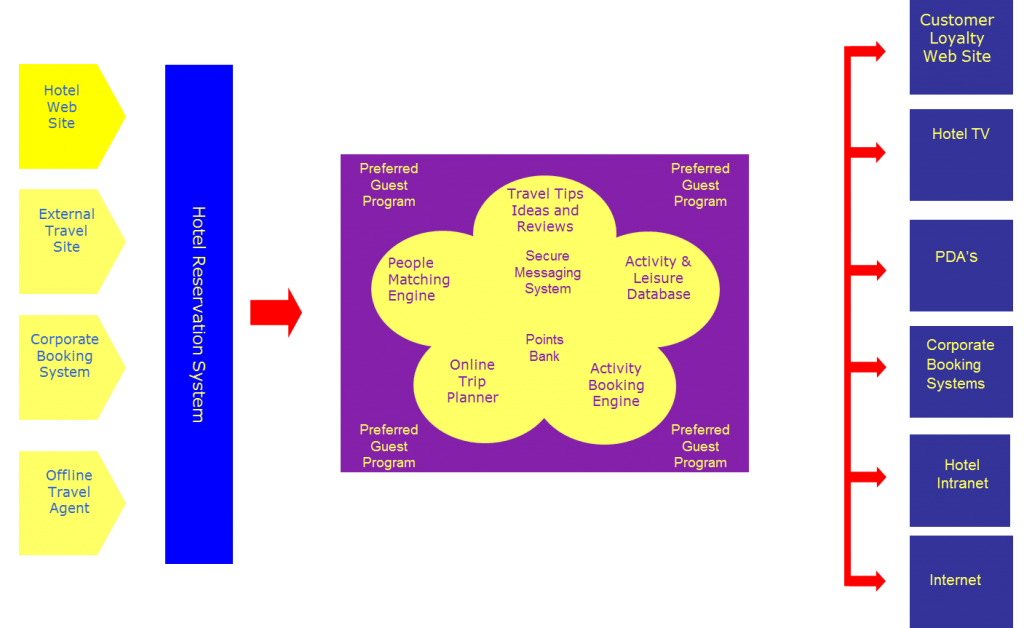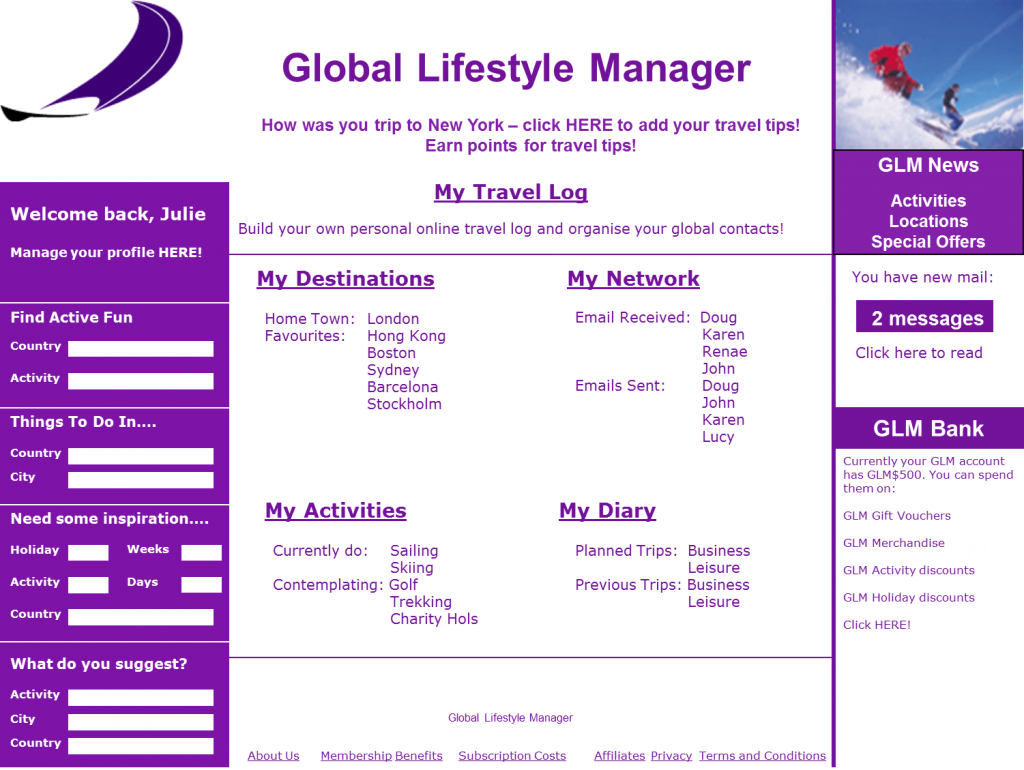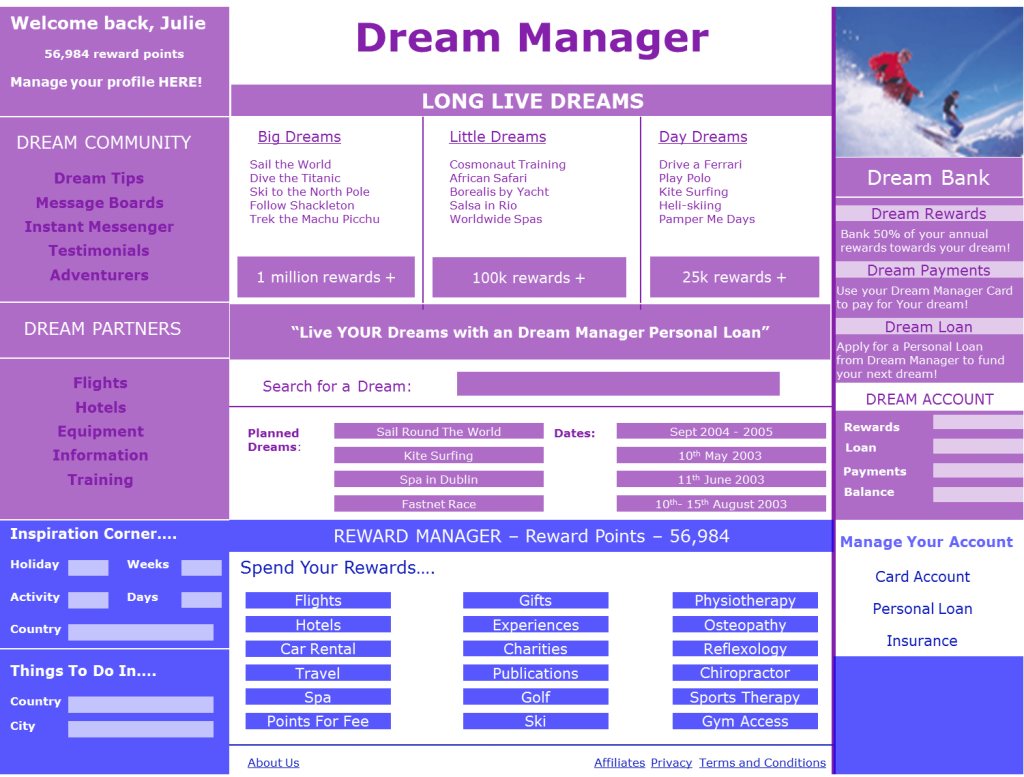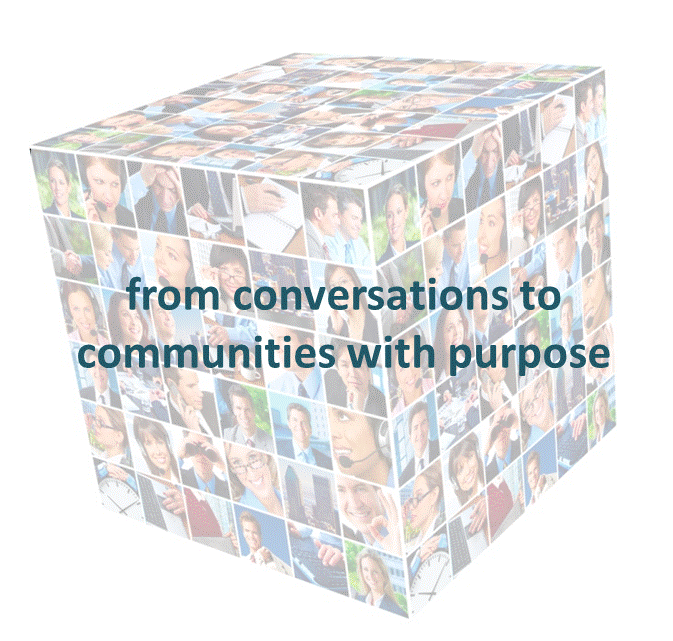customer loyalty 2001-04
In late 2001, I carried out a research project into the online dating market in the UK and the potential opportunity for a new entrant, the outcome was the cost of entry was too high for the angel investor; however it was my belief that the business model could be adapted for a different market segment, business travellers.
As someone who had travelled a lot on business, spent long periods working on projects overseas and relocated to Hong Kong to setup Greater China and ASEAN operations for a US software company, I saw an opportunity to create an online community of business travellers and provide them with a directory of sporting and cultural activities as well as hotels, restaurants and bars in different cities around the world, with the facility to share reviews and recommendations within the community. The concept started as a standalone service and presented to a handful of angel investors, whose feedback was that it was a dotcom which required a critical mass of members to make it commercially viable and that it would be more investable if one or more customers could be found for the solution.
As the primary service providers to business travellers, hotels, airlines and online business travel companies, I researched their service offerings and loyalty programs. The key findings were that hotels have 3 key performance indicators,
- REVPAR – revenue per available room
- Occupancy rate – which at the time was 69-71%
- Profitability – around 8-12%
and loyalty programs, whereby they were designed to reward customers, they also created a new cost for the organisation and more importantly, were held as a long term debt on the balance sheet, which provided a new challenge as this debt was a key factor in American Airlines and United Airlines financial troubles post 9/11.
I adapted my business model to be a subscription based software as a service solution for loyalty program operators, where the goal was to facilitate the creation of an online community of loyalty program members, with individual profiles, travel schedules, an activity directory, a review and recommendation engine and booking engine.
The core components for the solutions are shown below:

The key loyalty program member features were:

The concept was also adpated for financial/credit card services, as shown below:

Once the proposition and business plan was developed, leading hotel chains, airlines and online travel companies were appraoched to guage their interest and get their feedback. Armed with positive feedback meetings with venture capitalists in Boston, Toronto and London were arranged and the next challenge was to line up a potential management team with a first customer and investors. This proved to be a hard task and while there had been a positive response from each potential stakeholder group, the challenge was beyond my personal finances, so after 2.5 years, I decided to develop my knowledge, skills and work experience in this area through studying for a Masters in Strategic Marketing, working on fee earning clients projects and taking time out to develop new customer experience centred business propositions.
Click here to view original Business Plan – October 2002
Introductory presentations were developed and presented to a handful of hotels, airlines and online travel companies, an example of a couple of them are below:
And a genercic deck outlining the value of an online travel community and content based loyalty service:
